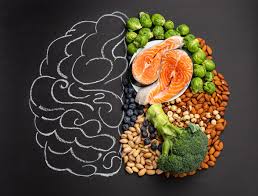Ayurveda, the ancient system of healing, classifies food and lifestyle choices based on the three doshas: Vata, Pitta, and Kapha. These doshas represent the energies that govern our physical and mental well-being. However, Ayurveda also recognizes the influence of Sattva, Rajas, and Tamas on our mental and emotional states. Rajas food in Ayurveda is particularly associated with activity, passion, and movement, and it plays a significant role in determining the quality of the food we consume.
In this post, we will explore Rajas food in Ayurveda, its characteristics, how it influences your mind and body, and tips on balancing it for improved health.
What is Rajas in Ayurveda?
In Ayurveda, Rajas refers to the quality of activity, passion, desire, and agitation. It is one of the three gunas (qualities) that influence our mind and body, alongside Sattva (balance and purity) and Tamas (inertia and darkness). Foods that are classified as Rajasik are considered stimulating, agitating, and tend to provoke a state of imbalance when consumed in excess.
Rajas food typically increases energy, stimulates the senses, and heightens the emotional state, making it suitable for times of activity or high energy demands but not for relaxation or mental clarity.
For a deeper understanding of another type of food energy in Ayurveda, check out our post on Tamasic food in Ayurveda to learn how it affects the body and mind.
Characteristics of Rajas Food in Ayurveda
Rajas foods are those that:
- Stimulate the senses: They increase desire, cravings, and restlessness. They tend to be heavy, spicy, or excessively sweet.
- Promote activity and mental restlessness: These foods can make you feel hyperactive, anxious, or even irritable.
- Induce cravings: Rajas foods are typically foods that you crave when you are emotionally disturbed, stressed, or seeking quick energy.
- Disrupt balance: When consumed excessively, Rajas foods can lead to an imbalance in the body, causing mental agitation and emotional instability.
Examples of Rajas Foods
- Spicy and salty foods: Foods that are rich in spices, such as chili, mustard, and garlic, can be Rajasik as they stir up passion and excitement in the body.
- Deep-fried and processed foods: Foods that are rich in unhealthy fats and sugars, like deep-fried snacks and sugary desserts, are known to cause emotional instability.
- Caffeinated beverages: Coffee, tea, and energy drinks can stimulate excessive mental activity, leading to restlessness and anxiety.
- Alcohol: Alcohol is often considered a Rajasik food because it promotes a false sense of relaxation followed by agitation.
- Meat: Red meat and other animal products, particularly when consumed in excess, are typically Rajasik as they can lead to emotional volatility.
How Rajas Food Affects the Mind and Body
Mental Effects
When consumed in excess, Rajas food can lead to mental agitation, restlessness, and anxiety. It overstimulates the mind and disturbs the ability to concentrate, making it challenging to achieve mental clarity or inner peace. Over time, consuming Rajas food can increase impulsive behavior and emotional instability.
Physical Effects
Physically, Rajas food tends to increase activity levels, which can lead to burnout or exhaustion if not balanced with grounding foods. Additionally, Rajas food can lead to imbalances in the digestive system, resulting in bloating, indigestion, or irritability.
Balancing Rajas Food in Ayurveda
While Rajas food can be beneficial in moderation for boosting energy or creativity, consuming it in excess can lead to mental and emotional imbalance. Ayurveda suggests the following practices to balance Rajas in your diet and lifestyle:
1. Incorporate Sattvic Foods
Balancing Rajas with Sattvic (pure and balanced) foods can help restore peace and harmony to the body and mind. Sattvic foods include fresh fruits, vegetables, whole grains, nuts, seeds, and mild spices. These foods nourish the body without overstimulating the mind.
2. Eat in Moderation
Avoid overeating Rajasik foods. Consume them in moderation and focus on meals that promote clarity and balance. Eating smaller portions of stimulating foods can help prevent mental restlessness.
3. Mindful Eating
Pay attention to your eating habits. When you eat mindfully, you avoid overeating and the emotional triggers that lead to cravings for Rajasik foods. Being present with your food can help you distinguish between true hunger and emotional desire.
4. Practice Grounding Techniques
To counteract the overstimulating effects of Rajas, engage in grounding practices such as meditation, yoga, and deep breathing exercises. These practices help calm the mind, reduce mental chatter, and bring a sense of peace.
5. Hydrate Properly
Drinking enough water and staying hydrated can help reduce the effects of Rajas food. Dehydration can exacerbate feelings of restlessness and irritability.
Rajas Food and Lifestyle Tips for Balance
- Start your day with a Sattvic breakfast: Opt for light meals such as porridge, fruits, or herbal teas to set a peaceful tone for the day.
- Incorporate herbal teas: Consider drinking calming herbal teas like chamomile, tulsi (holy basil), or peppermint, which can counterbalance the overstimulation from Rajas foods.
- Balance your daily routine: Engage in regular physical activity, but ensure it is complemented by relaxation practices to avoid excessive mental stimulation.
FAQs About Rajas Foods in Ayurveda
Can Rajas foods be completely avoided?
While it’s best to limit the consumption of Rajas foods, they can be part of a balanced lifestyle. The key is moderation and mindful eating.
What are the best foods to reduce Rajas?
Fresh fruits, vegetables, whole grains, nuts, and seeds are excellent choices to balance Rajas. Foods that are light, nourishing, and soothing promote mental clarity and peace.
Is Rajas food bad for your health?
In moderation, Rajas food is not inherently harmful, but excessive consumption can lead to imbalances in the mind and body, resulting in stress, anxiety, and digestive issues.
Conclusion
Rajas foods, while stimulating and energizing, can lead to mental and emotional disturbances when consumed excessively. Ayurveda emphasizes balance, encouraging the integration of Sattvic foods and grounding practices to counteract the overstimulating effects of Rajas. By understanding the role of Rajas in Ayurveda and making mindful choices, you can foster harmony in both your body and mind, promoting overall well-being.
For more in-depth research on the effects of diet on mental well-being and Ayurveda, check out this study on Ayurveda and its impact on mental health.



